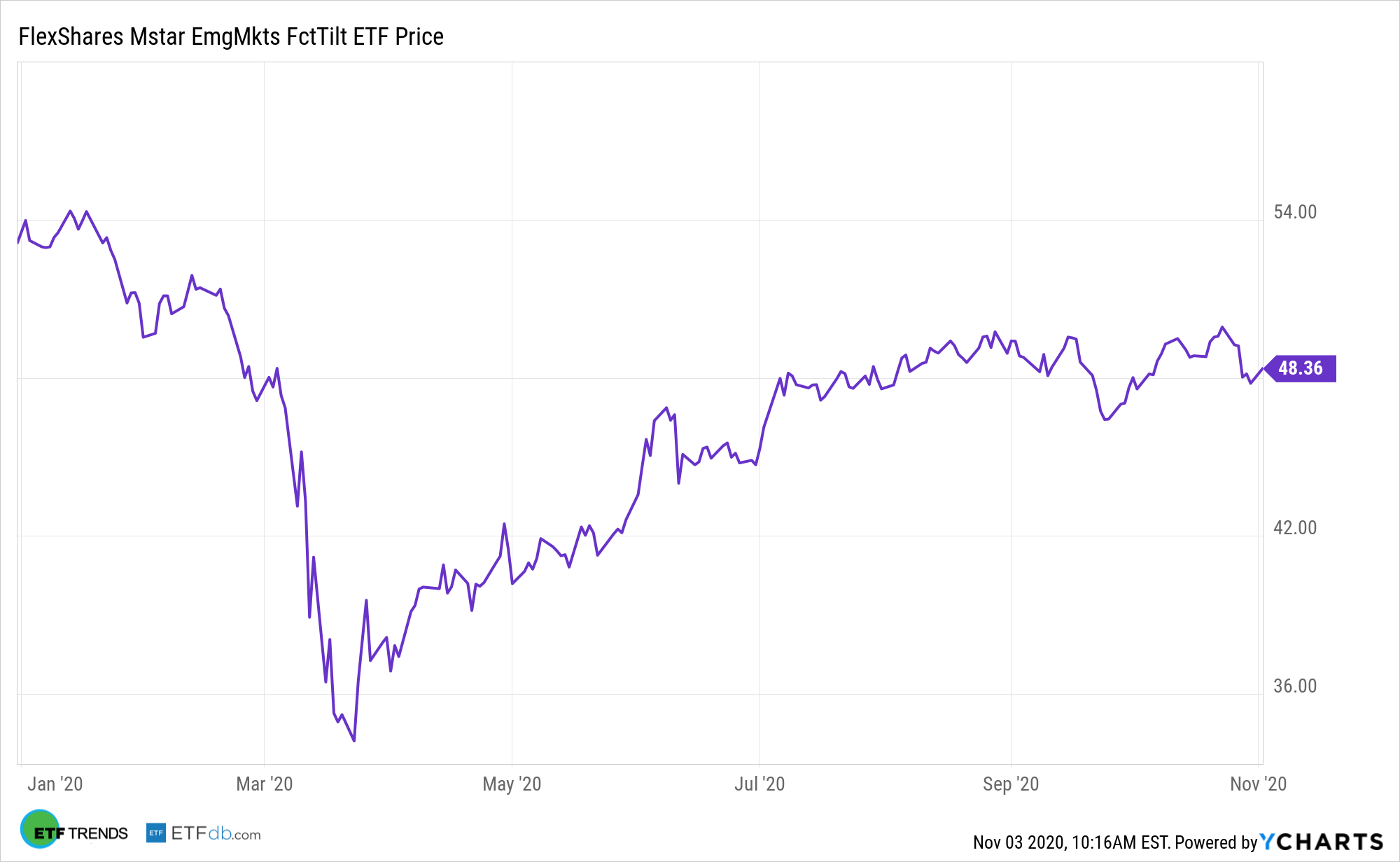In the run-up to Election Day, there’s been plenty of talk about a blue wave. This scenario could be positive for emerging markets equities, indicating investors may want to consider exchange traded funds such as the FlexShares Morningstar Emerging Markets Factor Tilt Index Fund (NYSEArca: TLTE) in the near-term.
TLTE seeks investment results that correspond generally to the price and yield performance, before fees and expenses, of the Morningstar® Emerging Markets Factor Tilt IndexSM. The index is designed to reflect the performance of a selection of companies that, in aggregate, possess greater exposure to size and value factors relative to the Morningstar Emerging Markets Index, a float-adjusted market-capitalization weighted index of companies incorporated in emerging-market countries.
“We are also updating some of our regional equity market views. This includes upgrading broad EM equities to overweight,” said BlackRock in a recent note.
Timing the Market with TLTE
Emerging markets investors are once again back as world economies begin the recovery process from Covid-19. But investors are not simply throwing darts at the board.
A victory by former Vice President Joe Biden on Election Day could lift emerging markets assets because it’s expected his tone toward China – the largest developing economy – will be far less bellicose than President Trump’s has been.
“Positive spillovers to global growth from increased fiscal stimulus, more predictable U.S. trade and foreign policy and the prospect of a weaker dollar amid negative U.S. real rates in the event of a Democratic sweep would all bode well for EM assets, we believe,” according to BlackRock.

After categorizing companies based on market cap, TLTE assigns a value score based on price/book ratio, price/earnings ratio, price/cash flow ratio, price/sales ratio, and dividend yield. Selected securities are then divided by thirds into the following categories: value, core, and growth—all applied to the market cap categories—large-cap, mid-cap, and small-cap allocations.
Factor-based strategies like smart beta ETFs can be used to solve different portfolio needs. For instance, single factors help target exposure to enhance returns or address specific client needs, whereas a multi-factor approach may provide a diversified core equity allocation that leverages the benefits of multiple factors and limit cycle risks associated with individual factors.
For more on multi-asset strategies, visit our Multi-Asset Channel.
The opinions and forecasts expressed herein are solely those of Tom Lydon, and may not actually come to pass. Information on this site should not be used or construed as an offer to sell, a solicitation of an offer to buy, or a recommendation for any product.

